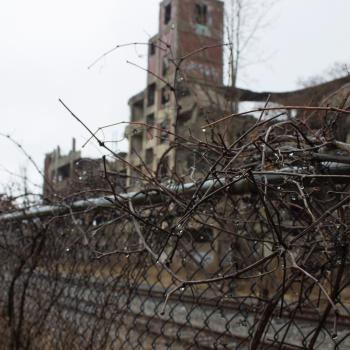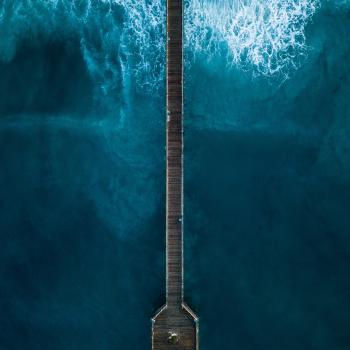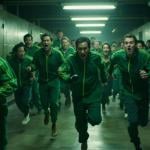 My teenage granddaughter Phoebe was visiting us from out of town. On these visits, we always choose a movie for evening viewing.
My teenage granddaughter Phoebe was visiting us from out of town. On these visits, we always choose a movie for evening viewing.
“What about The Wizard of Oz? I think it was the first movie we watched together here, when you were about five,” I suggested at dinner.
Phoebe demurred. “The producer did bad things to Judy Garland,” she said. “They made her eat almost nothing to get thinner, and they gave her pills that led to her becoming addicted. And they were bad to the Tin Man, too. The aluminum paste they put on his face to look like tin made him sick.”
All this was news to me, but I wasn’t surprised when Phoebe added, “I don’t think I can watch that movie ever again, knowing all this.”
So we didn’t. We watched The Big Sick instead—which does have a major illness, but doesn’t pretend not to.
A few days after Phoebe left, I found that I did still want to watch The Wizard of Oz. After all, it’s a classic, said to be one of most popular films of all time, and I hadn’t seen it for over a decade. Plus it was free on Amazon Prime: so easy to watch! So I did.
In many ways, it was of course wonderful. But, as always, I was uncomfortable with the Munchkins being played by hundreds of midgets. And the green Wicked Witch of the West still scared me, as she always has. But that wasn’t the worst of it.
After watching, I searched online for articles about whether the filming harmed the actors. Phoebe had been right. But there were even more horrors than she’d mentioned.
Dorothy: Producers’ tormenting Judy Garland over her weight began before the Oz filming. When she was fourteen, filming her first feature movie, “MGM told her she looked like a ‘fat little pig with pigtails’ on screen and she was put on her first of many diets. Because her calories were so restricted—executives would go so far as to remove a plateful of food when she was about to eat it—she was permanently hungry.”
When it came to the filming of Oz, Garland was a sixteen-year-old who had to look as if she were ten. Managers put her on a strict diet and gave her tobacco to suppress her appetite. The famous blue-and-white gingham dress was chosen to make her look younger, but she was forced to wear a tight corset under it to hide her developed figure.
The Tin Man: The actor originally cast for this part was Buddy Ebsen. To create his “tin” face, an aluminum powder makeup was invented. After only ten days of filming, inhaling this powder caused Ebsen to have a severe reaction as the dust entered his lungs. He nearly died.
Jack Haley was then cast as the Tin Man, without anyone telling him what had happened to Ebsen. At least MGM changed the composition of his face makeup: the aluminum powder was turned into a paste, to avoid the danger of inhaling it. But the paste gave Haley an eye infection that required surgery.
And speaking of face makeup: All of it was toxic, so the Scarecrow and the Cowardly Lion and the Wicked Witch, along with the Tin Man, couldn’t eat at all while wearing it and could drink only through straws.
The Wicked Witch: Of course, I don’t feel sorry for the character, but I do for actress Margaret Hamilton. Here’s what happened. You’ll remember that she exits Munchkinland in a burst of flames. The trick was that she was being lowered below the stage as the fire dramatically ignited.
But one time the trick didn’t work: she wasn’t lowered quickly enough, and the green copper-based paint on her face and hands caught fire. The third-degree burns kept her out of filming for three months.
After this experience, she refused to do her other smoky scene, where the broomstick she flies on is billowing smoke. MGM agreed to have another actress, Betty Danko, do this flying. Poor Danko: as with the Tin Man, the second actor got hurt anyway. The smoke mechanism malfunctioned, and Danko was severely injured.
And speaking of malfunctions: There was yet another accident that harmed the actors during filming. Those scary Winged Monkeys that do the bidding of the Wicked Witch: they appear to go flying through the sky in one scene. What really held them aloft were wires—which broke during the scene. The Monkeys crashed to the ground, suffering injuries (unsurprisingly).
Yes, this was 1938-9. Making movies was relatively new, and special effects even newer. Given all these misjudgments and accidents during the filming, I suppose it’s amazing that no actor died.
But now that I know of all these filming disasters, I’m with Phoebe in not wanting to watch The Wizard of Oz again—I’d be distracted the suffering that creating this classic film entailed. Still, I’ll miss the yellow brick road and the ruby slippers and “Somewhere Over the Rainbow.”
 Peggy Rosenthal writes widely on poetry as a spiritual resource. Her books include Praying through Poetry: Hope for Violent Times (Franciscan Media), and The Poets’ Jesus (Oxford). See Amazon for a full list. She also teaches an online course, “Poetry as a Spiritual Practice,” through Image’s Glen Online program.
Peggy Rosenthal writes widely on poetry as a spiritual resource. Her books include Praying through Poetry: Hope for Violent Times (Franciscan Media), and The Poets’ Jesus (Oxford). See Amazon for a full list. She also teaches an online course, “Poetry as a Spiritual Practice,” through Image’s Glen Online program.












